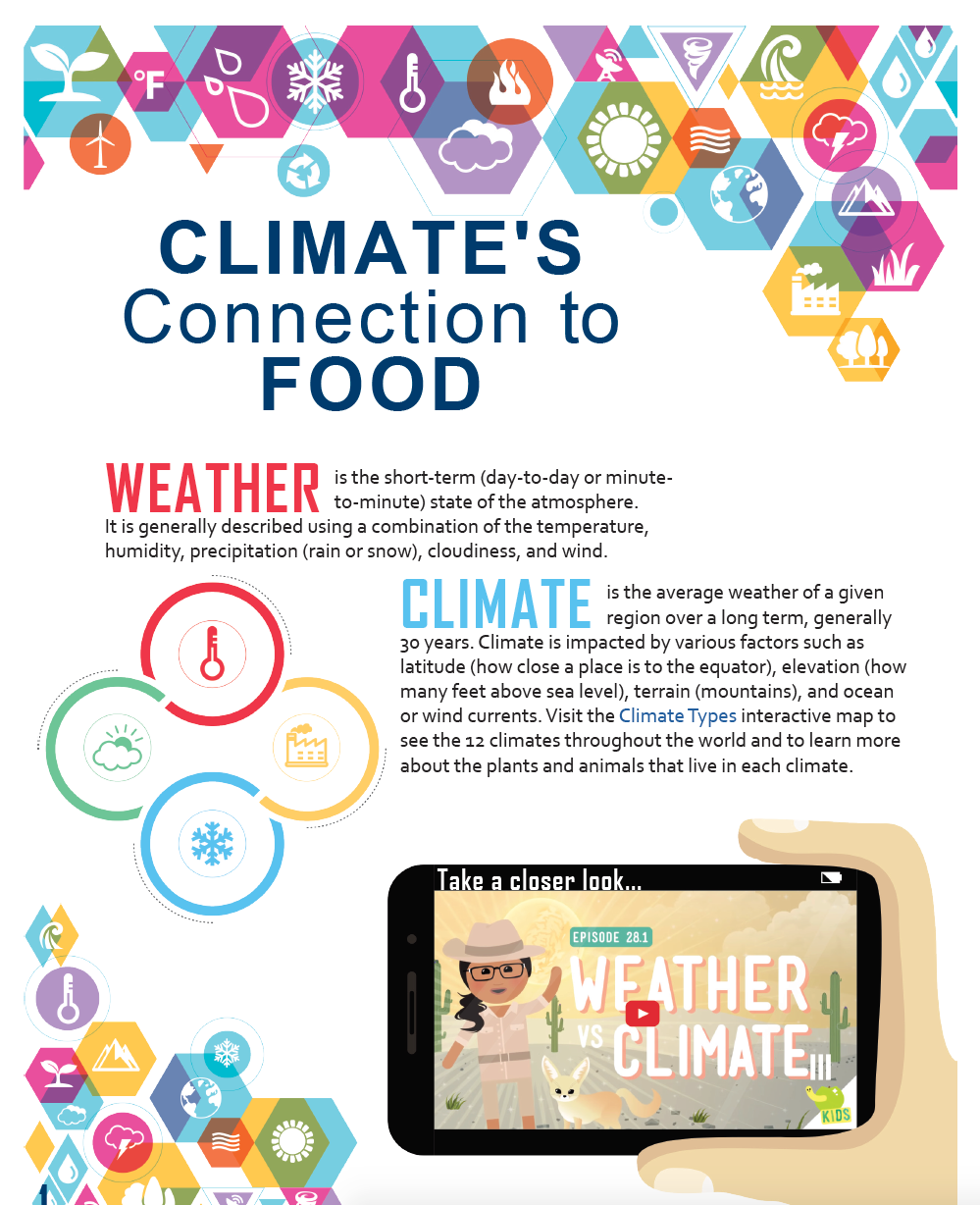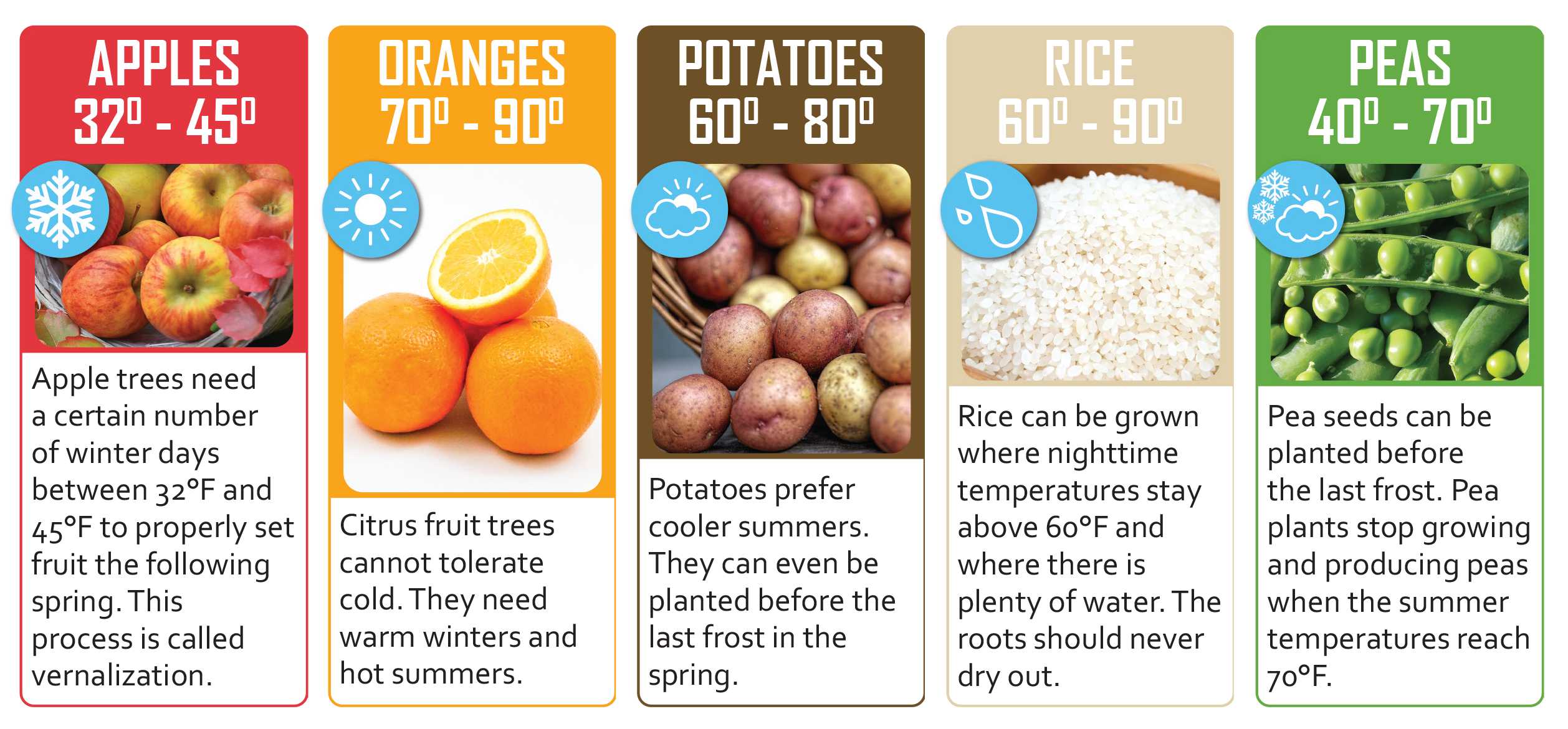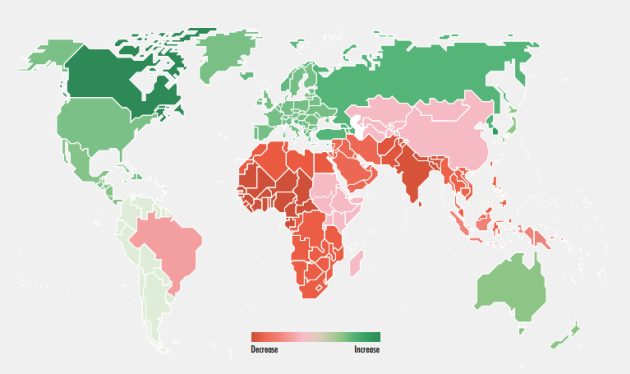Where Does it Grow? The Science of Climate and Food
Students will discover the connection between climate and our food supply as they answer the question, "Where does it grow?" They will also explore the consequences of climate change on our food supply and discover how advances in science can help farmers adapt to climate change.
Background
Lesson Activities
Recommended Companion Resources
Credits
Author
Andrea Gardner | National Center for Agricultural Literacy (NCAL)
Sources
- http://www.foodsystemprimer.org/food-distribution/
- https://utah.pbslearningmedia.org/resource/buac17-35-sci-ess-usclimatezones/major-us-climate-zones/#.Xllh6pNKja4
- https://climate.nasa.gov/
- https://www.futurelearn.com/courses/climate-smart-agriculture/0/steps/26565
- https://en.m.wikipedia.org/wiki/Climate_change_and_agriculture
Standards
Indiana Content Area Standards
-
Geography and History of the World: Human and Environmental Interactions: Resources, Hazards, and Health: Standard 9
Students examine the physical and human geographic factors associated with examples of how humans interact with the environment, such as deforestation, natural hazards and the spread of diseases, and the regional and global consequences of these interactions.
- GHW.9.2 Human and Environmental Interactions: Resources, Hazards, and Health: Identify regional resource issues that may impede sustainability, economic expansion and/or diversification and assess the impact of these issues on the physical and human environments of specific regions.
-
Geography and History of the World: Global Change: Standard 12
Students examine the human causes of change to the environment on a global scale along with the impact of these changes all life.
- GHW.12.1 Global Change: Analyze global climate change forecasts for different parts of Earth and the implications of these changes for humans.
-
English Language Arts.Grade 9-10.RV.1
Acquire and accurately use academic and content-specific words and phrases at the college and career readiness level; demonstrate independence in gathering vocabulary knowledge when considering a word or phrase important to comprehension or expression.
- Vocabulary Building.9-10.RV.2.1: Use context to determine or clarify the meaning of words and phrases.
- Vocabulary in Literature and Nonfiction Texts.9-10.RV.3.2: Determine the meaning of words and phrases as they are used in a nonfiction text, including figurative, connotative, denotative, and technical meanings; evaluate the effectiveness of specific word choices on meaning and tone in multiple and varied contexts.
-
English Language Arts.Grade 9-10.SL.1
Listen actively and adjust the use of spoken language (e.g., conventions, style, vocabulary) to communicate effectively with a variety of audiences and for different purposes.
- Discussion and Collaboration.9-10.SL.2.1: Initiate and participate effectively in a range of collaborative discussions on grade-appropriate topics, texts, and issues, building on others ideas and expressing personal ideas clearly and persuasively.
-
English Language Arts.Grade 11-12.RV.1
Acquire and accurately use academic and content-specific words and phrases at the college and career readiness level; demonstrate independence in gathering vocabulary knowledge when considering a word or phrase important to comprehension or expression.
- Vocabulary Building.11-12.RV.2.1: Use context to determine or clarify the meaning of words and phrases.
- Vocabulary in Literature and Nonfiction Texts.11-12.RV.3.2: Determine the meaning of words and phrases as they are used in a nonfiction text, including figurative, connotative, denotative, and technical meanings; evaluate the cumulative impact of how an author uses and refines the meaning of a key term or terms over the course of a text.
-
English Language Arts.Grade 11-12.SL.1
Listen actively and adjust the use of spoken language (e.g., conventions, style, vocabulary) to communicate effectively with a variety of audiences and for different purposes.
- Discussion and Collaboration.11-12.SL.2.1: Initiate and engage in a range of collaborative discussions on grade-appropriate topics, texts, and issues, building on others ideas and expressing personal ideas clearly and persuasively.



